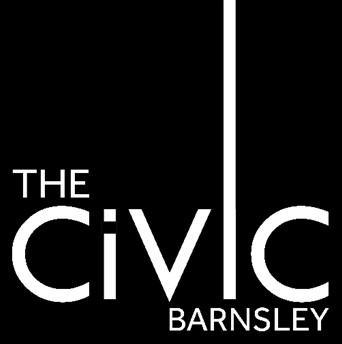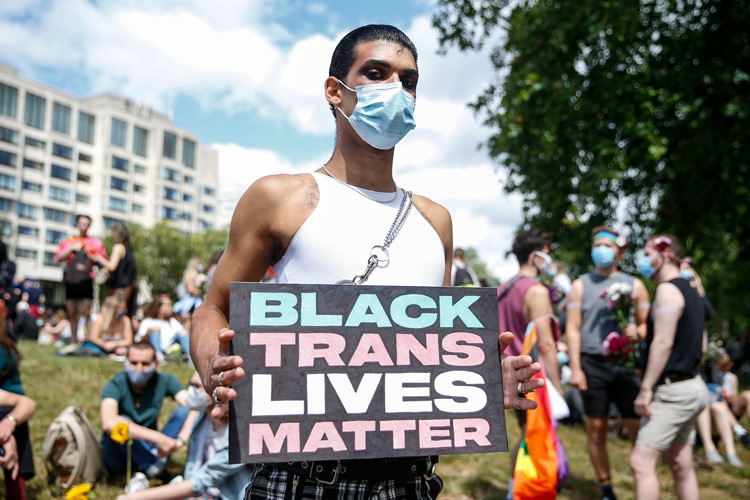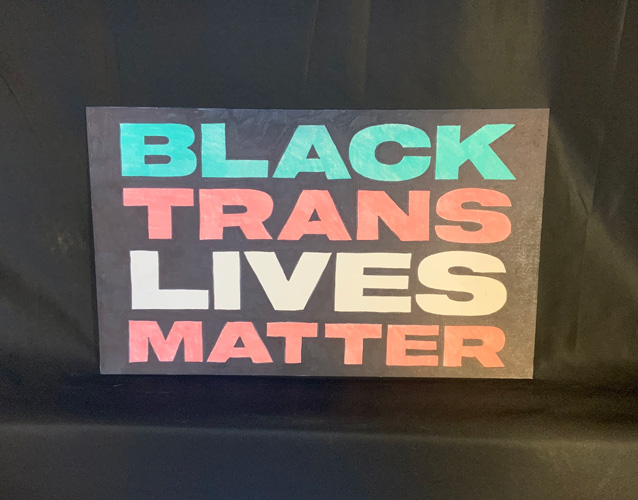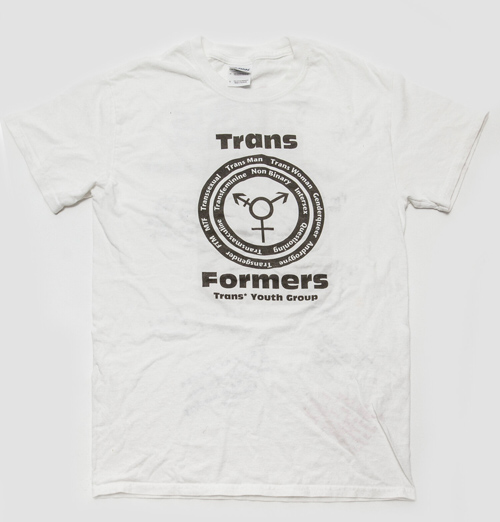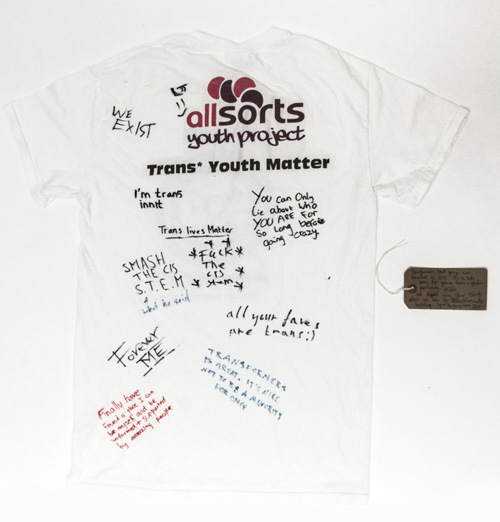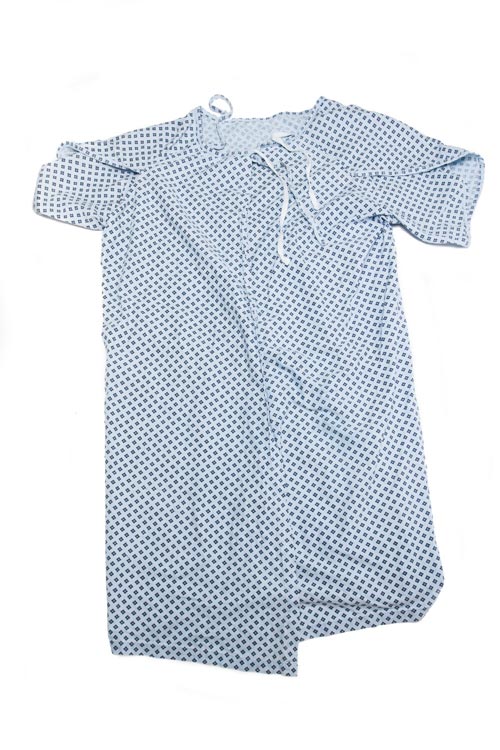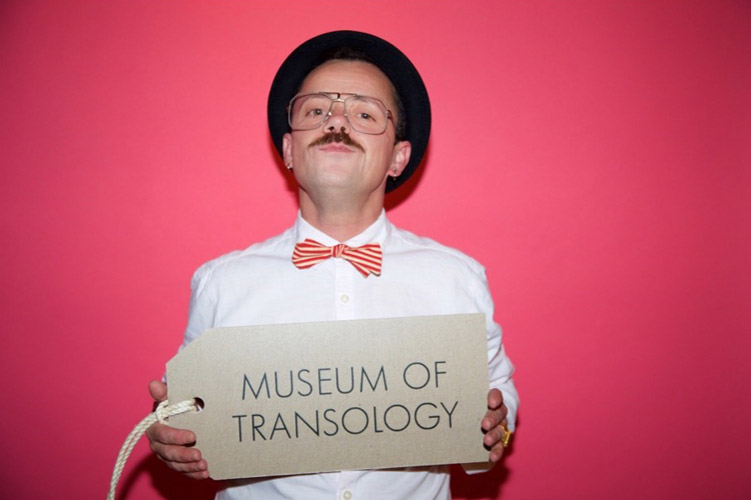Stepping Out of the Trans Closet:
Fashion in the Museum of Transology
The Museum of Transology is the world’s largest collection of material culture representing trans, non-binary and intersex lives. Since collecting began in the UK in 2014, more than 400 objects have been donated. It continues to grow, with 95 protest signs being saved at the Black Trans Lives Matters march in London in 2020.
Everyone who donates an object to the MoT has complete say over what they decide to contribute. A brown swing tag with a handwritten message is attached to each donation to explain its significance. This means both the story and the object are archived as two parts of a whole, in a deliberate strategy to ensure the experiences surrounding trans, non-binary, and intersex people’s everyday lives are recorded in their own words, in perpetuity. This is important, because whilst trans lives are hotly debated in the UKs press and politics, rarely does this public conversation include the voices of trans and intersex people themselves.
By collecting trans history today, for tomorrow, trans and intersex people will never again struggle to see themselves represented fairly in the past. The collection has been designed to halt the erasure of trans lives from history, to tackle the misrepresentation of trans people in the political sphere, and to combat the spectacularization of trans bodies and experiences by the mainstream media.
The Museum of Transology’s collection is as diverse as the trans experience itself. Yet some themes have naturally emerged that tie the objects and experiences together. Fashionable items including accessories, dress, hats and underwear often represent milestones of self-acceptance, with many objects reflecting how the contributors use garments to fashion not only their bodies, but their sense of self.
From a pair of ‘lucky’ boxer shorts given to a trans guy by his ex-girlfriend that accompanied him through his transition…
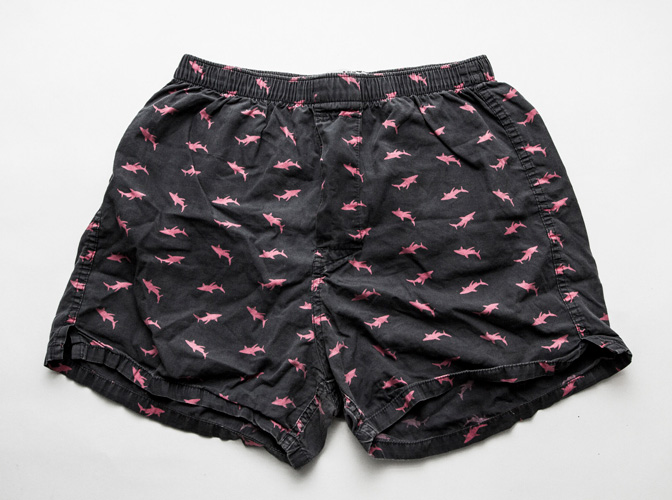
OBJECT NUMBER MOT/30: Boxer shorts
‘Shark pants! My ‘lucky’ pants, given as a gift by an ex-girlfriend. These have followed me through coming out as genderqueer, social and then physical transition.’
To a simple, yet precious, eyeliner that illustrates how Krish’s brown and trans identities intersect…
These objects reveal how taking control over fashioning our trans bodies is a vital tool for connecting who we are on the inside with the outside world. In the words of non-binary writer and performer, Travis Alabanza, “…oh my god, I look good. I look like, me. I truly felt, if possible, like my gender.’
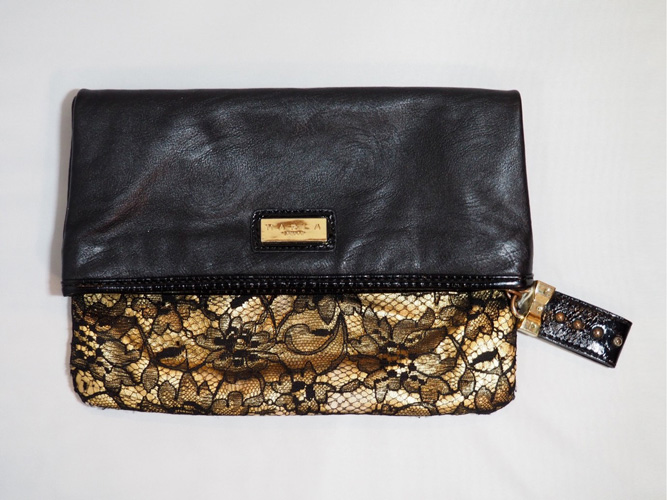
OBJECT NUMBER MOT/72: Gold Handbag
‘This is my first good bag it went with me on every night for over 2 years. It did not hear the abuse in the streets; it did not see the attack. It just felt my joy as I danced and lived for the first time.’
Sometimes that outside world can be dangerous. Key findings in Stonewall’s Trans Report included the shocking statistic that two in five trans people experienced a hate crime because of their gender identity in the last twelve months. Amongst them, Black trans women and trans women of Colour are disproportionately affected by anti-trans violence.
But this black and gold handbag isn’t just a powerful reminder of the everyday reality of a danger that’s faced by members of the trans community, especially members of QTIBIPOC (queer, trans, intersex, Black, Indigenous and People of Colour) communities. Instead, it is an inspirational account of the tenacity, courage and conviction this person employed to live life to the full.
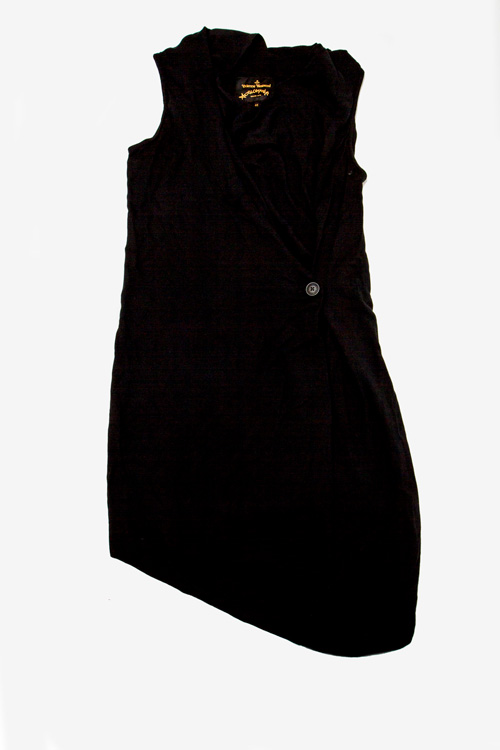
OBJECT NUMBER MOT/199: Vivienne Westwood Anglomania Dress.
‘I wore this Vivienne Westwood dress in 2016 on Grayson Perry’s television show Born Risky, as a way of challenging my own gender conformity. Since transitioning, I pass as a cisgender man, but I am aware of the daily struggle of avoiding the coercion with toxic masculinity and male privilege that this enables– it’s constant and everywhere. Wearing a dress in front of an audience for public broadcast was an opportunity to confront the way in which my masculinity is a construct that I need to test, not assume. E-J’
Whilst in England, men wearing dresses is often seen to be a deviant act, all over the world and throughout history men’s dress has included gowns, skirts, corsets and other garments that are typically associated with femininity in the Western world today. The trans history of this Vivienne Westwood dress teaches us that fashion can break the very same gender rules it usually enforces. Non-binary fashions are increasingly being embraced in the world of haute couture, with labels such as Gucci now producing an MX collection. Westwood’s own earliest ranges (such as the Cowboy’s t-shirt first created in 1975 for the London shop ‘SEX’ that she ran with Malcolm McClaren) played with gender- and homoerotica, so reworking this piece syncs with the item’s own broader dress history.
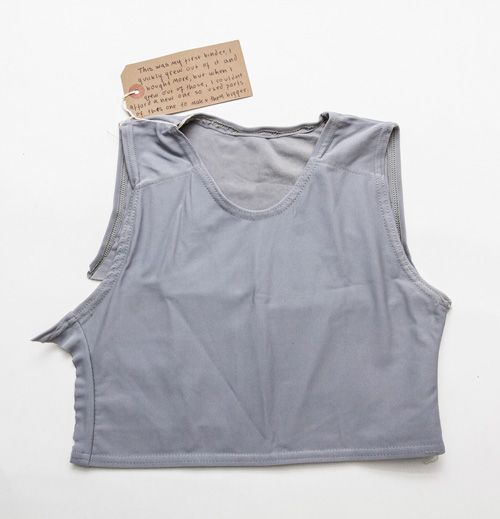
OBJECT NUMBER MOT/25: First binder
‘This was my first binder, I quickly grew out of it and bought more, but when I grew out of those, I couldn’t afford a new one so used parts of this one to make them bigger.’
Several of Robert Cruickshank’s early 19th century etchings reveal the lengths to which the British Dandy (a term used to describe wealthy, extremely fashionable men in the 1800s) would go to, to create the perfect silhouette to slip into his tailored Saville Row suit. Cruikshank’s satirical cartoons reveal that throughout history, people of all genders (including men) have used strapping, boning, crinolines and tailoring to produce the fashionable silhouette they desire. Tight corsets, stuffed pads to accentuate the calves under breeches and elaborately tied white muslin cravats that extended the appearance of the neck were all dandy de rigueur.
This binder was used to flatten the wearer’s chest to create a smoother, squarer shape. It reveals not only the dress practices of the trans community, and the techniques employed to shape the trans body, but also, the expense that can be incurred purchasing these specialist items during periods of rapid adolescent growth. For working class trans people, it can be a challenge to afford not only medical treatment, but also the daily necessities of trans life.
The ingenuity of this young, creative, non-binary person inspired them to reuse materials to craft a solution to their financial challenges. It’s a clever, practical and money-saving effort that reveals the lengths to which one will go to meet their need for the authentic expression of their gendered selves. It also humanises the process, by continuing a centuries-old fashion tradition.
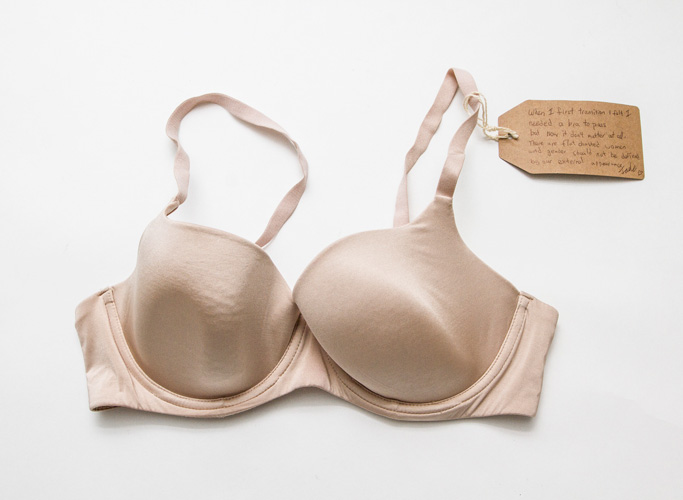
OBJECT NUMBER MOT/91: Padded Bra
‘When I first transitioned I felt I needed a bra to pass, but now it don’t matter at all. There are flat chested women and gender should not be defined by our external appearance.’
This bra is a physical memento of a precious and thoughtful realisation surrounding the process of fashioning gender normativity. Rejecting notions of the ‘female body beautiful’, the wearer of this bra came to terms with one of the most important trans lessons of all– understanding that body ideals are as oppressive as notions of gender normativity. This is the central principle of trans feminism.
This is therefore an object of liberation, as much as it is an artefact of transformation. It demonstrates the way which trans self-awareness can overcome body dysmorphia to find gender euphoria– a freedom from societal expectations that allows trans people to navigate their experiences beyond the boundaries of cisnormativity and beauty myths. As the trans community gains collective confidence, the traditional aspirations of ‘passing’ as cisgendered– inferring that you fail, if you look to be recognisably trans– are waning. Being proud to be trans improves self-esteem, mental health and individual wellbeing.
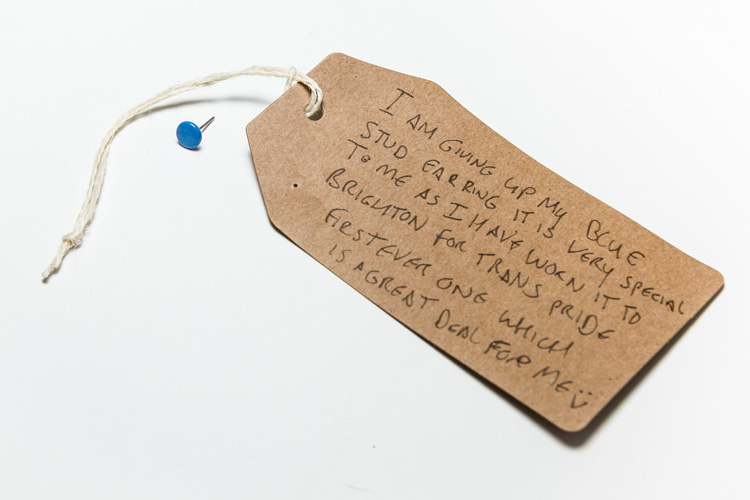
OBJECT NUMBER MOT/145: Blue Earring
‘I am giving up my blue stud earring; it is very special to me as I have worn it to Brighton for the first Trans Pride event which is a great deal for me.’
In 2013, Brighton Trans Pride was the first celebration of its kind in the UK. It’s now thought to be the biggest Trans Pride anywhere in the world, attracting around 10, 000 visitors each year. But there are now Trans Pride celebrations popping up all over the UK, marking a shift in the visibility and confidence of trans communities everywhere, not just in the South East of England. From Trans Pride Leeds to Trans Pride Cardiff, Scotland and Northern Ireland, trans people are stepping out in the same way our LGB friends have for decades before us: with pride, on our own terms.
Trans Pride Brighton had just celebrated its sixth anniversary when this tiny little earring was donated to the Museum of Transology in 2019. For all those years it had been kept as a precious memento that marked an occasion of great significance to its owner. It says: ‘This is me, proud to be out with my people’. It also reflects how despite trans people traditionally being invisible in museums, they’ve nonetheless been saving their own transcestry. Finding a place in history helps us know who we are, where we have come from and what our aspirations are for the future. Even though this object was so clearly precious to its owner and had been kept so dear for so long, the donor didn’t hesitate to hand it over to be saved by the Museum of Transology when the opportunity arose. It tells us a bigger story– the importance of being part of your community’s history, and a keenness to share this history with the wider world.
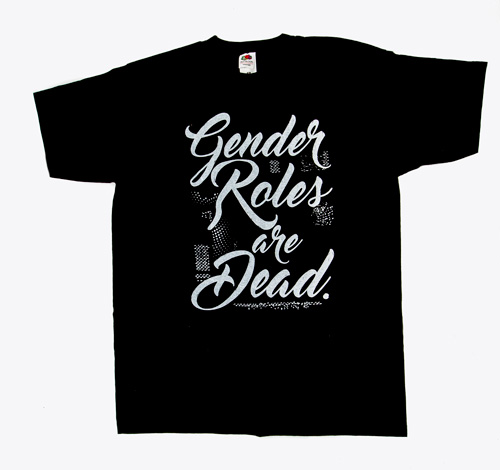
OBJECT NUMBER MOT/12: Black T-shirt with Hand-drawn Text by Trans Artist Fox Fisher
T-shirts are the most popular of all fashionable garments. They have been used as a political weapon by the gay and lesbian activists since the 1970s, with ‘queer’ soon to follow, most notably on 1980s ACT UP (Aid Coalition to Unleash Power) t-shirts. Popular slogans like ‘Glad to Be Gay’ and ‘Dyke, Just Do It’, and logos including the downward pointing pink triangle, deliberately used visibility as a tool to advocate for positive social change. Wearing your politics on your sleeve reflects confidence in your community’s cause.
‘Transformers youth group was founded in 2011. It’s a safe space for young trans and gender questioning people. We stopped using these t-shirts after we saw the #Blacklivesmatter hashtag. Signed by young trans service users.’
Nearly half a century later, and the rise of the trans political t-shirt is indicative of the political landscape within which trans activists find themselves today. Decades behind the lesbian and gay movement in its fight for equality, but increasingly confident, unapologetic and– very much like the gay and lesbian activists before us– often armed with a great sense of humour. And this is as important, as it is joyful, because despite the media’s persistent claims that the trans community is dogmatic, in truth, the Museum of Transology’s growing political t-shirt collection shows the way in which the community manages to maintain an element of irreverent campness our wider community is famous for, keeping us buoyant on the road to equal rights and access to healthcare. The path to liberation can be fun.
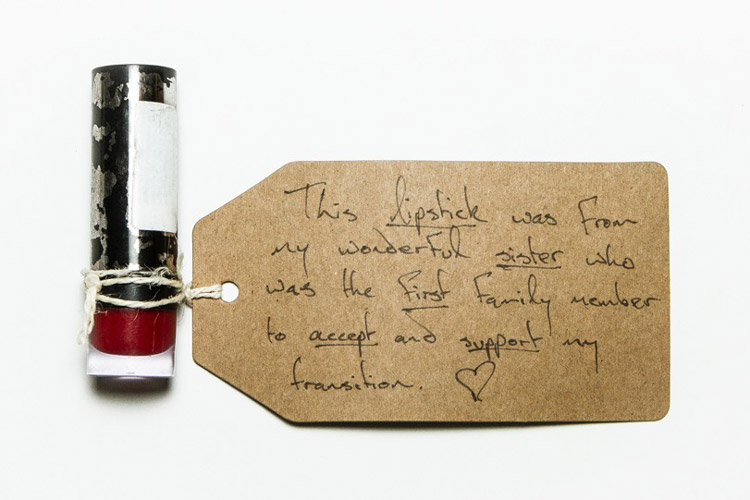
OBJECT NUMBER MOT/161
Telling our stories in our own words is the key to acceptance, understanding and equality in broader society. There are two reasons this red lipstick is so very special, and it’s not because of some elite fashion designer branding. Quite the opposite. It’s an everyday lipstick, bought at an everyday store, by a regular person. Except that regular person was was this trans person’s beloved sister, and that lipstick isn’t just a lipstick, it’s a little red stick of love, of care, of understanding. It’s a token of hope for everyone within the trans, non-binary and intersex communities: that one day, we will all enjoy the affection of family, friends and lovers that we deserve.
It’s obvious from the marks on this object that show evidence of wear and tear, that this artefact has been held onto, saved and cherished (perhaps long past its use-by-date) – a piece of personal history, held dear. Having it in the Museum of Transology will mean it is carefully protected and saved so that future generations of trans people and their families and friends will see how far we have travelled to fight for our rightful place in history.
All object photography by Katy Davies, Fashion Space Gallery, London College of Fashion, UAL.
E-J Scott founded the Museum of Transology with a collection of objects and garments he saved from his own trans surgery in 2014. He was awarded the UK’s Activist Museum Award 2020-21. Other projects he has curated include West Yorkshire Queer Stories + Queer Heritage South + DUCKIE + Queer & Now Tate + e-jscott.com When he’s not curating, he’s Stage 2 & 3 Leader of BA (Hons) Culture, Criticism & Curation at Central Saint Martins, UAL.
